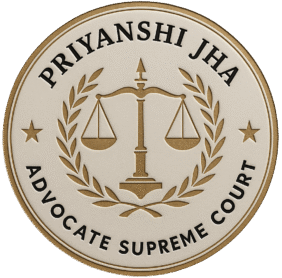
Filing a civil suit in India can be complex, but understanding the step-by-step process saves time, money, and frustration. Whether you’re dealing with property disputes, breach of contract, or recovery suits, this guide covers the latest 2025 procedures under the Civil Procedure Code (CPC).
Any aggrieved person (individual, company, or legal entity) can file a civil suit if:
✅ A legal right has been violated
✅ The cause of action arose within the last 3 years (generally)
✅ The suit is filed in the correct court (based on jurisdiction)
Civil suits are filed in:
| Court Type | Monetary Jurisdiction (2025) | Example Cases |
|---|---|---|
| District Court | Above ₹10 lakhs | Property disputes, large contract breaches |
| Senior Civil Judge | ₹1 lakh – ₹10 lakhs | Medium-value recovery suits |
| Junior Civil Judge | Below ₹1 lakh | Small rent disputes, minor damages |
| High Court | Original jurisdiction in big cities (e.g., Delhi HC for suits above ₹2 crores) | High-stakes commercial disputes |
📍 Jurisdiction Rules:
Territorial: Where the defendant resides or where the dispute occurred.
Pecuniary: Based on the claim’s monetary value.
The plaint (written complaint) must include:
Parties’ Details (Name, address, occupation)
Facts of the Case (Clear timeline of events)
Cause of Action (What legal right was violated?)
Relief Sought (Compensation, injunction, possession, etc.)
Court Fees (Calculated as per state laws)
📄 Sample Format:
“The plaintiff is the owner of [Property Details]. The defendant illegally occupied the property on [Date]. Despite legal notices, the defendant refuses to vacate. The plaintiff seeks possession and ₹[X] in damages.”
Fees vary by state (e.g., 2-10% of claim value).
Exemptions for indigent persons (under Order XXXIII CPC).
Pay via court challan/online (many courts now accept UPI).
Submit Documents:
Plaint (2 copies + extra for each defendant)
Supporting documents (agreements, notices, proof of ownership)
Court fee receipt
Register the Suit: The court stamps & assigns a case number.
Summons Issued: Court orders the defendant to appear (usually within 30 days).
The defendant must file a written statement (WS) within 30-90 days.
If they don’t respond, the court may pass an ex-parte decree.
Framing of Issues (Court identifies key disputes)
Plaintiff’s Evidence (Affidavits, witnesses, documents)
Defendant’s Rebuttal
Final Arguments
⏳ Average Timeline:
Urgent Injunctions: 1-3 months
Full Trial: 2-5 years (varies by court backlog)
If you win, the court issues a decree.
Enforcement Options:
Property attachment
Bank account freezing
Police aid for possession orders
✔ Send a Legal Notice First (Increases settlement chances)
✔ File in the Right Court (Avoid dismissal on technical grounds)
✔ Preserve Evidence (WhatsApp chats, emails, witness statements)
✔ Consider Mediation (Court-annexed mediation can fast-track resolution)

Yes, but legal drafting errors can lead to dismissal.
File where the defendant has assets or where the dispute arose.
No, but some cases (e.g., cheating) allow parallel proceedings.
File for fast-tracking or mediation.
Small claims (under ₹1 lakh) in Junior Civil Judge courts.
Get a free checklist + consultation:
📱 Click to WhatsApp Me Now
📞 Call: +91-6202260239
“One drafting error can delay justice by years. Start strong.”

